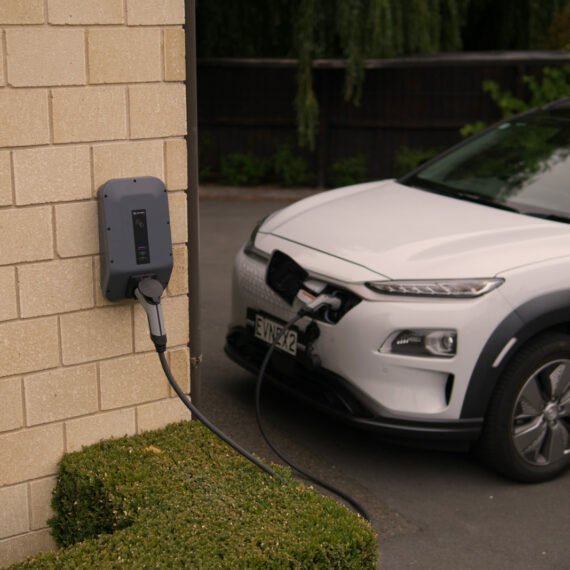Energy saving technology has gone a notch higher with new advancements emerging each day. The latest arrival in the realm of energy storage is the new EV bi-directional charging technology that allows electric vehicle owners to power their homes using their electric vehicle.
Sounds good to be true? Well, keep reading.
As electric vehicles in Cairns continue to gain traction, like what we are seeing across the rest of Australia, car buyers are becoming more futuristic in their decisions even as they give preference to environmental benefits and low running costs regardless of heightened concerns about initial costs, driving range, charging station infrastructure among others.
But, did you know that you can power your house using an electric car battery? And that you could make some bucks by selling electricity generated by your electric car battery to your neighbours or the likes of Ergon Energy through the main grid?
Welcome to EV bi-directional charging. But first things first….
How bi-directional charging technology works?
Let’s start by making it clear that the technology is new, and there are no one stop bi-directional charging experts in Cairns, or even Australia as of yet. As a veteron licensed electrician, accredited solar installer designer, who owns and runs the best solar energy company in Cairns, I can safely say that Brenton Hielscher is pioneering the electric vehicle charging and solar storage space in Cairns through his enthusiasm with clean energy technology in Cairns. This combined with Tim Nicholson, a motoring specialist from RACV and someone who Hielscher consider to be an expert in the field has shared research that includes the consistent important facts that are now shared with you so that you can begin to understand the benefits and features of EV bi-directional charging in Cairns. Like Brenton Hielscher, Nicholson is and expert in the clean energy field and known to be a leading supplier of solar panels, batteries and energy saving solutions in Victoria.
This article is written for you as an introduction to bi-directional charging technology and contains what I believe you need to know about Bi-directional charging and how the vertical integration with existing solar storage works in your Cairns home.
What a mouthful! Let’s dive in….
Bi-directional Charging Facts
A vehicle that features bi-directional charging capabilities—also referred to as vehicle-to-home (V2H) or vehicle-to-grid (V2G) charging, will not only charge the electric vehicle battery with power from the main grid, but can also export energy back to Ergon Energy’s grid as well as power a home by using electricity from the electric vehicle battery. Ultimately, it allows your electric car to act as your home energy battery, storing power to be used later in your home or exported to the grid. Similar to how solar panels work on your home.
How does EV bi-directional charging work?
Charging a traditional electric vehicle involves a uni-directional charger that converts the AC (alternating current) power supplied by the grid to DC (direct current) energy.
This is done using a converter that is usually in-built within the vehicle or installed within the charger. When you want to export energy to the grid or power your home using the energy stored in the electric vehicle’s battery, the DC electricity sourced from the vehicle has to be converted back to AC energy. This is only possible using a EV bi-directional charger which resembles the normal electric vehicle charger installed in your home.
Bi-directional charging is currently under trial in the United States, Denmark and in the United Kingdom where it’s being utilised to power homes, offices and tools in the aftermath of catastrophic weather events and severe storms that have taken place in countries like Japan. According to Nissan, the 62kWh battery in their Leaf e+ is capable of storing enough clean energy to power the average home in Japan for up to four days.
Is bi-directional charging in Cairns?
Unfortunately the answer to this question is ‘not yet’—Though things are moving in the right direction as trials supported by the Australian Renewable Energy Agency (ARENA) are currently underway in Canberra. The trail dubbed Realising Electric Vehicle-to-grid Services (REVS) features 51 Leaf electric vehicles that already form part of the ACT Government electric vehicle fleet. When the electric vehicles are plugged in, they are expected to feed clean energy back into the main grid when the electric vehicles are not in use.
Once the EV bi-directional charging units are tried, tested and approved by all the relevant authorities, only then will this new ground breaking technology hit the Australian market. This is expected to take place around June 2022 however subject to supply chain disruptions. When the technology is released, Hielscher Electrical Cairns and RACV Victoria hope to participate in a bi-directional charging trial. So watch this space.
Can all electric vehicles feature bi-directional charging?
No! Only electric cars designed to include a CHAdeMO charging port can safely allow bi-directional charging and here in Cairns, this is limited to two electric car models on the market—the Nissan Leaf electric vehicle and the Mitsubishi Outlander plug-in hybrid.
Other electric vehicles feature the common CCS2 charge port which is a generally accepted standard across the globe. Notably, a draft standard to govern bi-directional charging using CCS2 is planned for release later this year.
Popular electric car makers including Tesla, BMW, Honda, Volkswagen and more are projecting the release of a bi-directional functionality in their subsequent electric vehicle models.
How much does bi-directional charging unit cost?
The price of electric vehicle bi-directional charging units on the Australian market is yet to be announced, though car buyers can expect to part with about $5000-$6000. With dynamic international supply chain disruptions caused by current geopolitical activity coupled with Australian supply chain issues caused by extreme weather that has lead to severe flooding in Brisbane and Northern New South Wales, I anticipate an increase between now when this post has been researched and published and when the technology is to be released.
How much money will I save by installing a bi-directional charger?
An electric car inbuilt with bi-directional charging capability can effectively handle the role of a home solar storage battery allowing the homeowner to store excess energy that can be used later to power the home or exported back to the grid.
When the energy that charges the vehicle is from a cheap or free source like solar power generated by your rooftop solar panels, a free electric vehicle charging station at a nearby shopping centre or even at your workplace, then your household energy bills are bound to reduce significantly.
Alternatively, you can sell the excess clean energy back to the grid or charge your electric vehicle off-peak and sell clean energy to Ergon Energy during peak times from afternoon through to evening hours, thereby optimising your profits.
Can vehicle-to-home charging deplete the vehicle’s battery?
According to Ben Warren, national manager of mobility and electrification at Nissan Australia, owners will still have some charge in their electric car batteries by the end of the day.
For instance, the driving range of the Nissan Leaf e+ is 385km while a normal daily commute round trip is only 32km, hence a fully charged car battery might still hold approximately 350km of range (around 57kWh of battery storage capacity, of the 62kWh) remaining in the electric car battery by the time you get home.
Ben adds that electric vehicle owners have the chance to set user parameters via their smartphone app. For instance, you can ensure the electric vehicle battery charge doesn’t go below 35 percent when releasing power to your home.
When the electric car battery hits 35 percent, the bi-directional charger automatically shuts down and the home reverts to sourcing power from the main grid.
Is bi-directional charging safe?
Bi-directional chargers come with inbuilt measures engineered to prevent any risk and mitigate any safety concerns. Bi-directional chargers work like solar inverters, and feature a sensor that monitors the load of a home and the amount of power that flows in and out. When the sensor detects an abnormal change in the system voltage, the bi-directional charger automatically switches off.
Does Bi-directional charging drain an electric car battery faster?
The latest research indicates that bi-directional charging doesn’t have any associated negative long-term effects on the electric car batteries since the processes of charging and discharging are in-fact less intensive compared to drawing energy through everyday driving. As a matter of fact, energy can only be discharged from electric cars at the rate of 7kW. Therefore Nissan’s 8-year/160,000km storage battery is not affected by bi-directional charging provided that the bi-directional charger being used is approved by Nissan.












